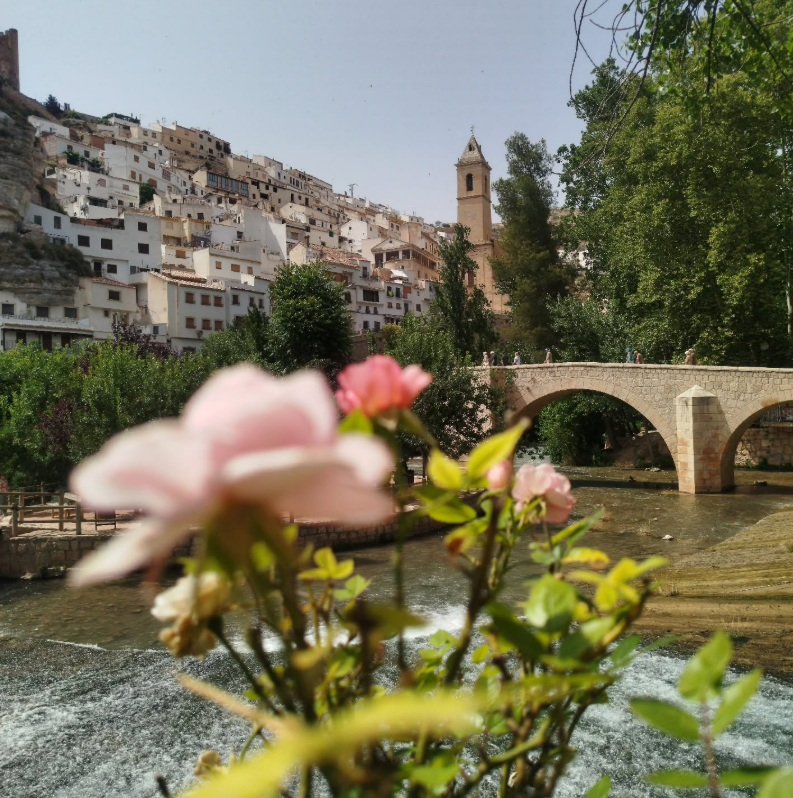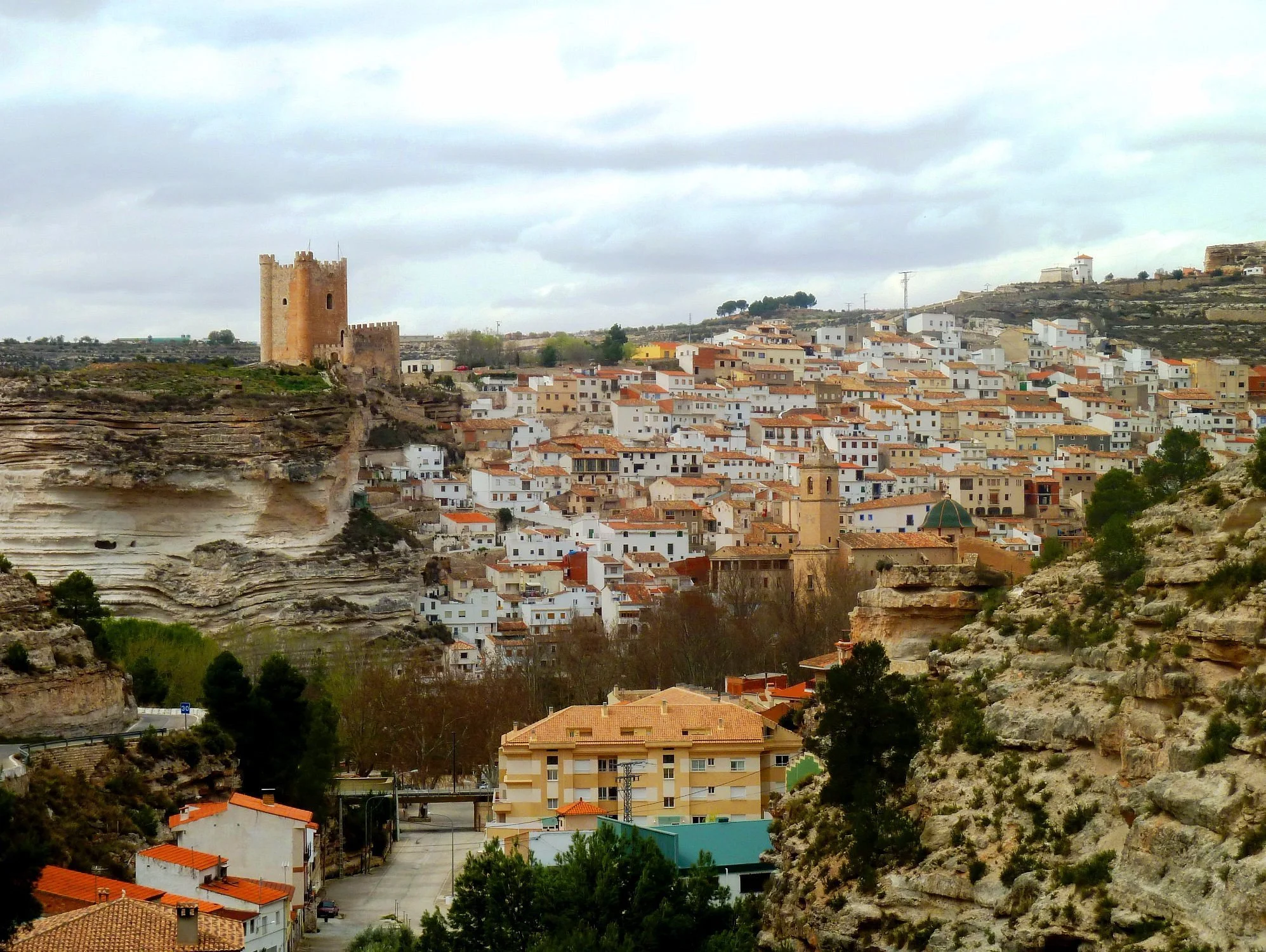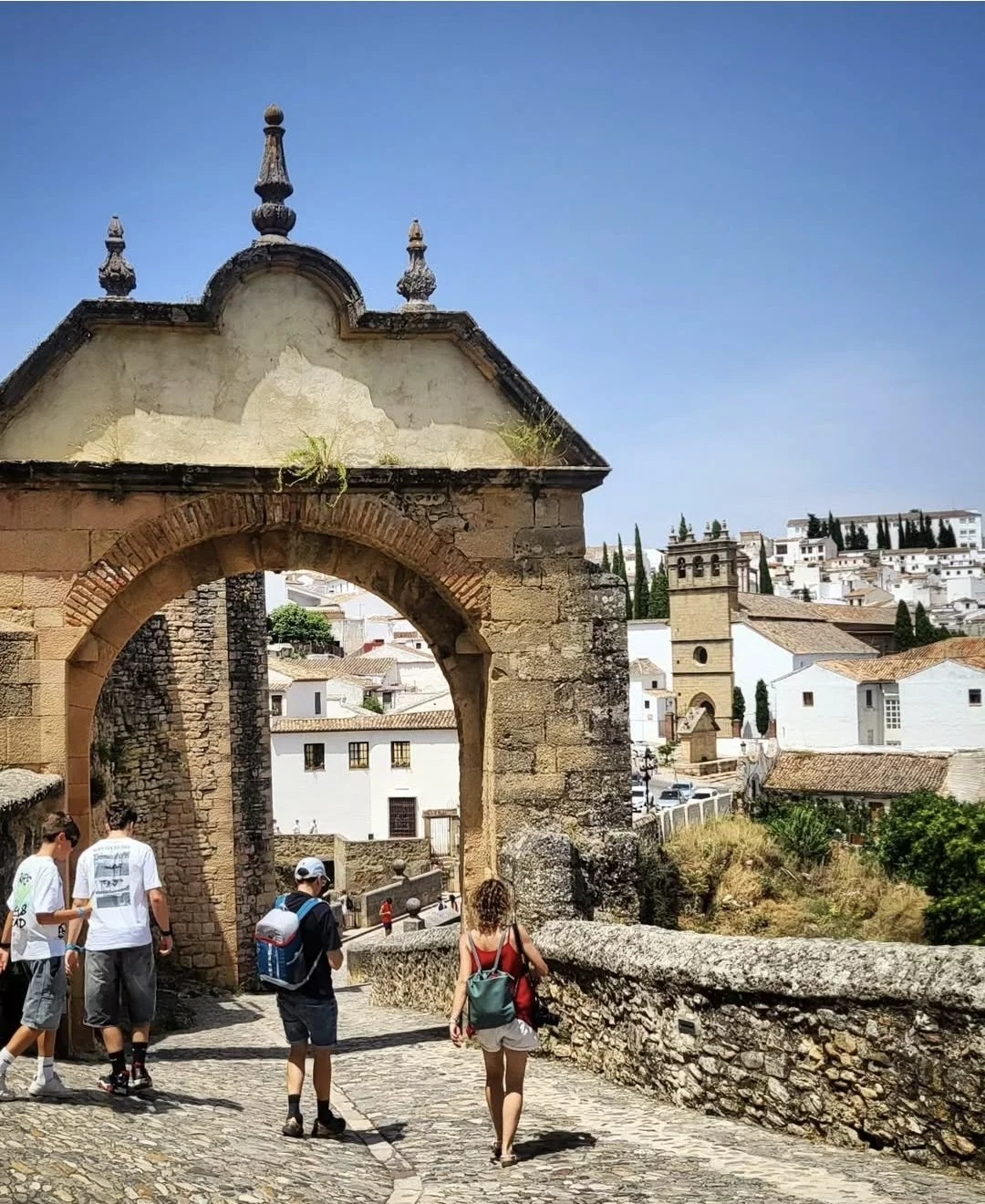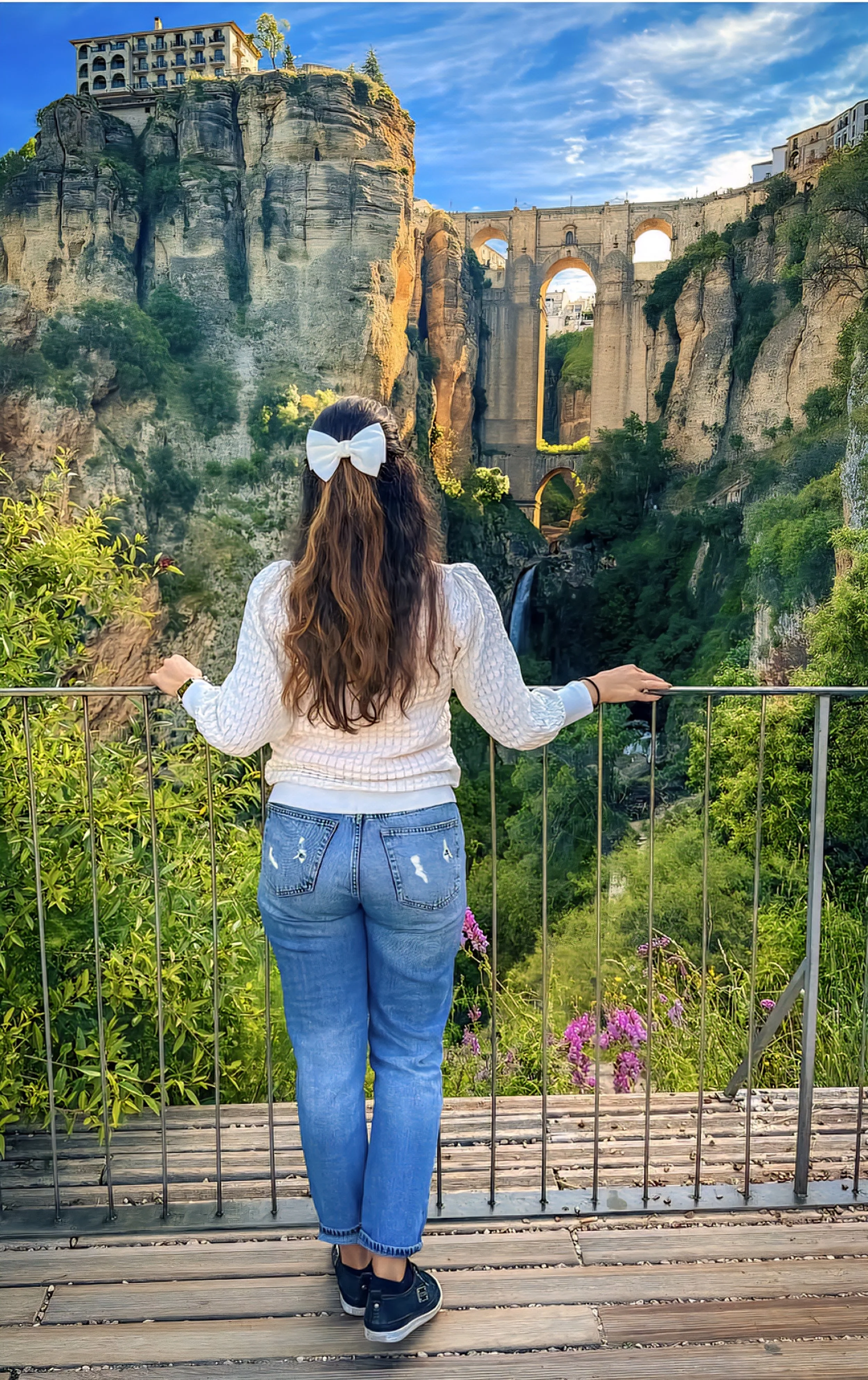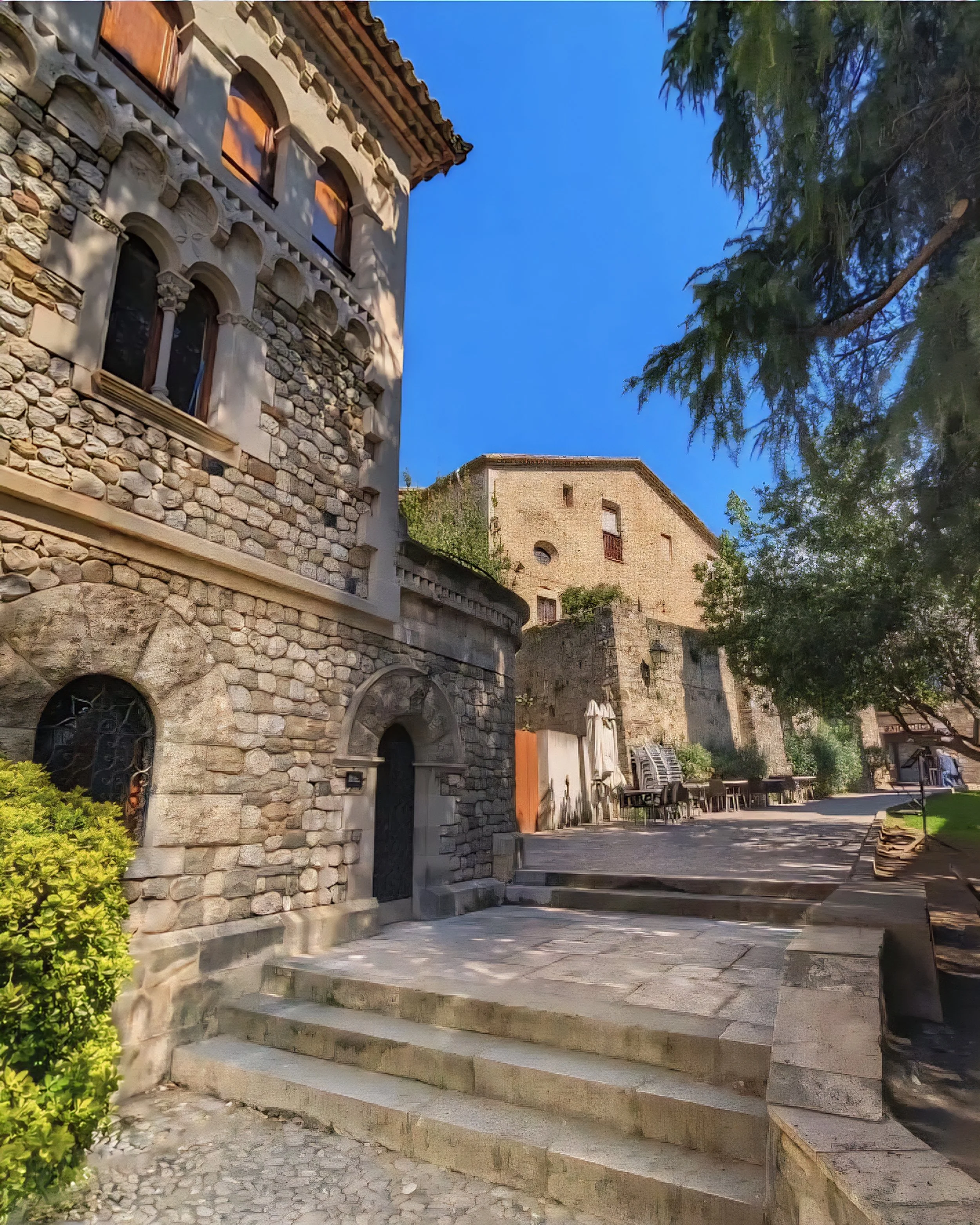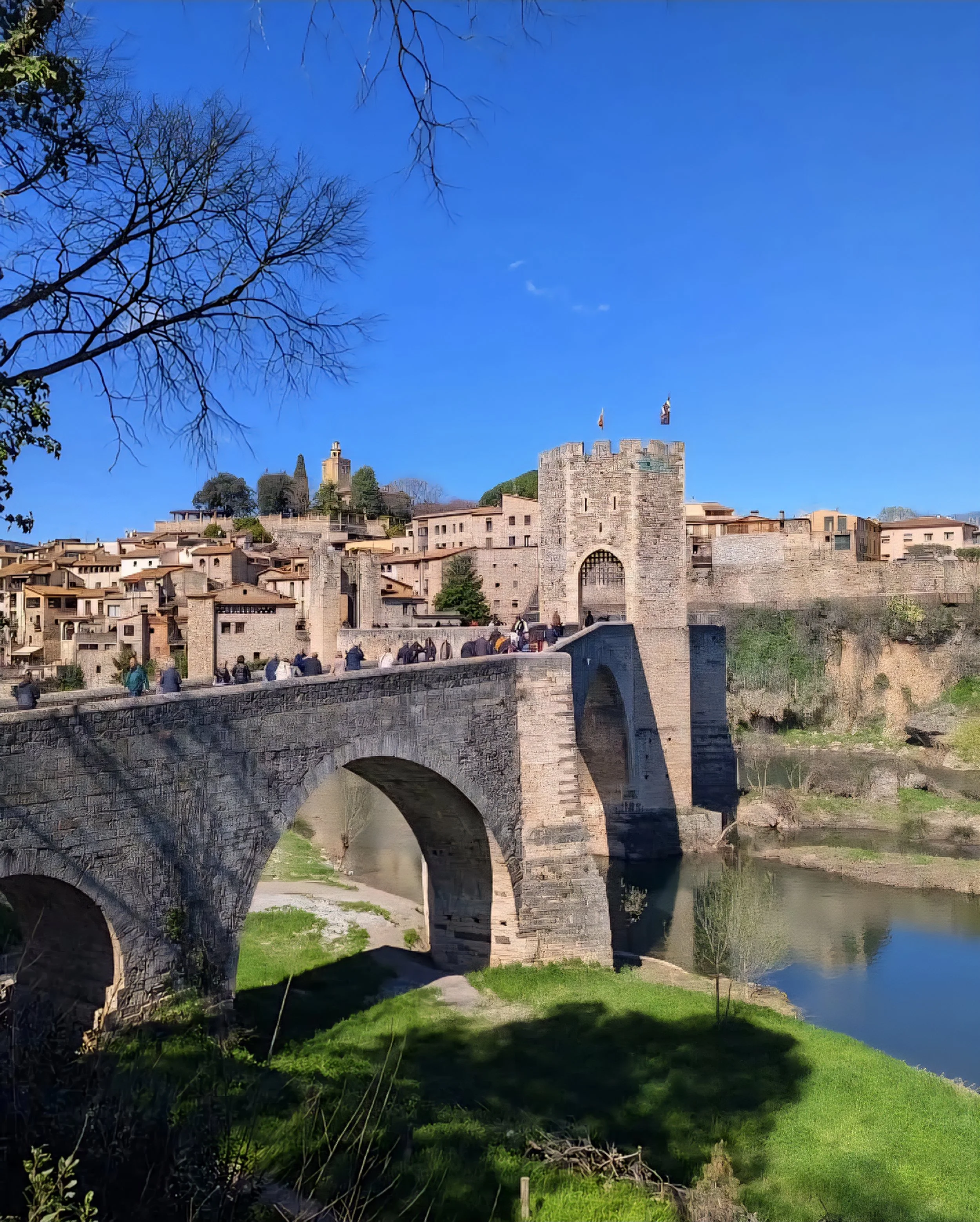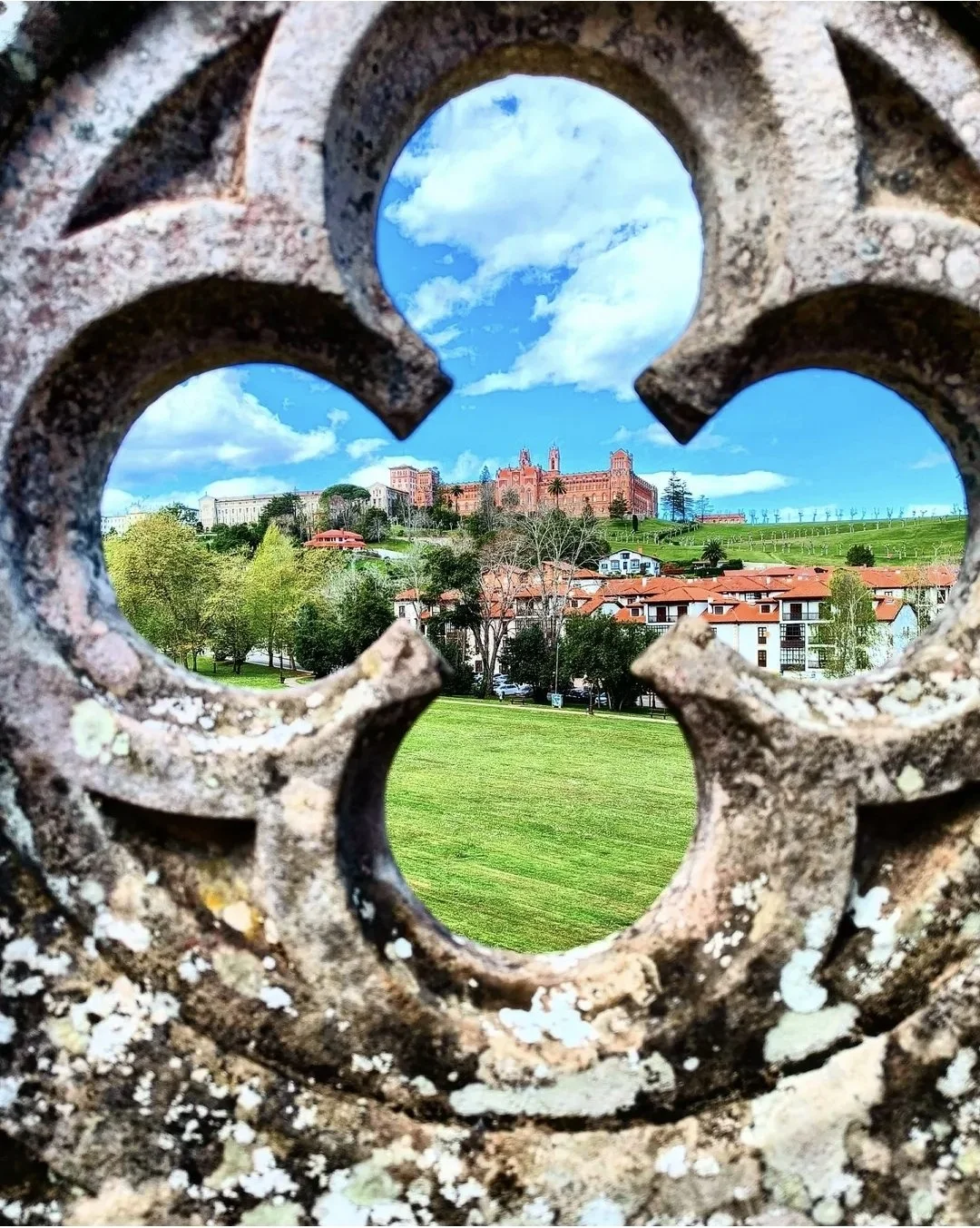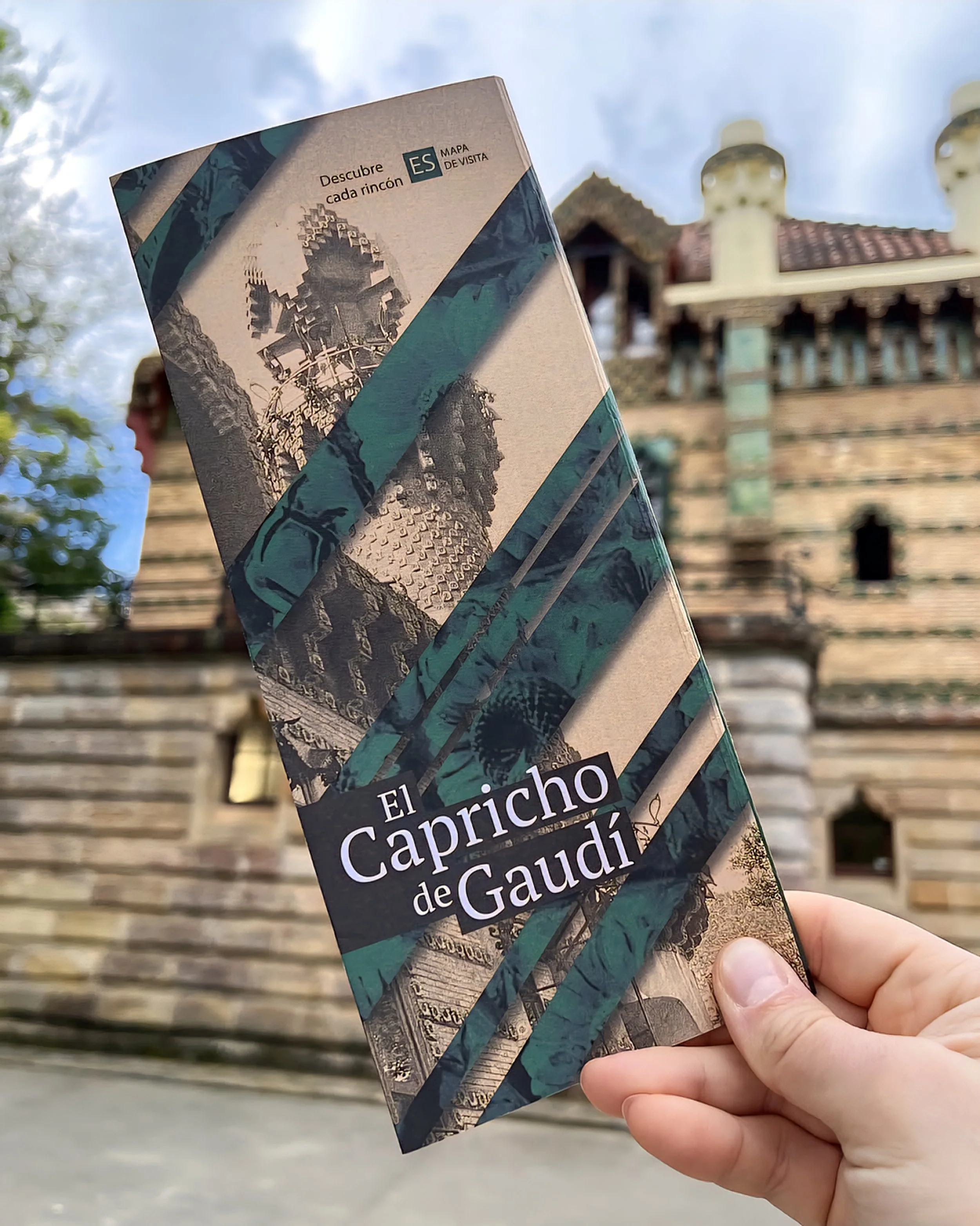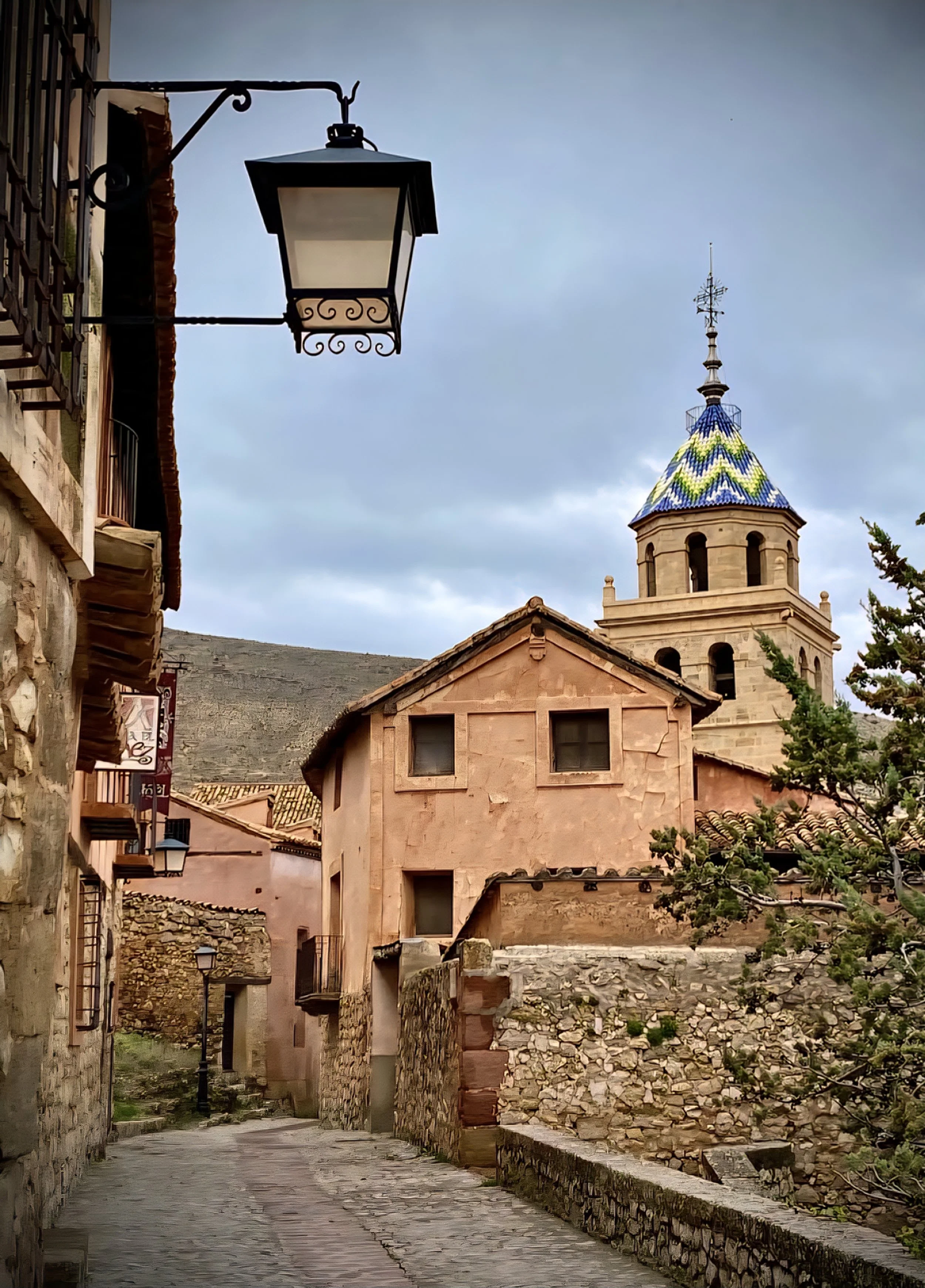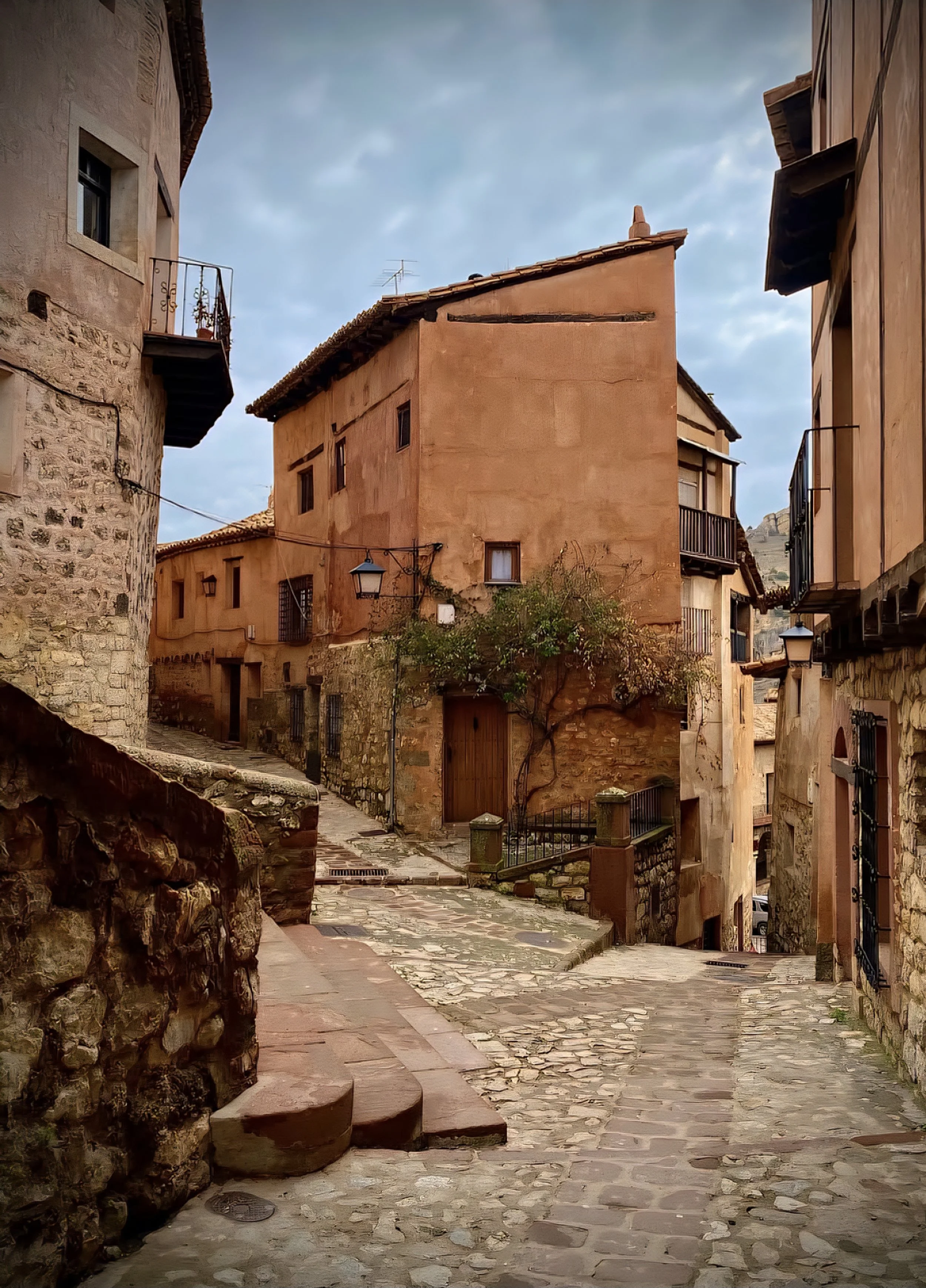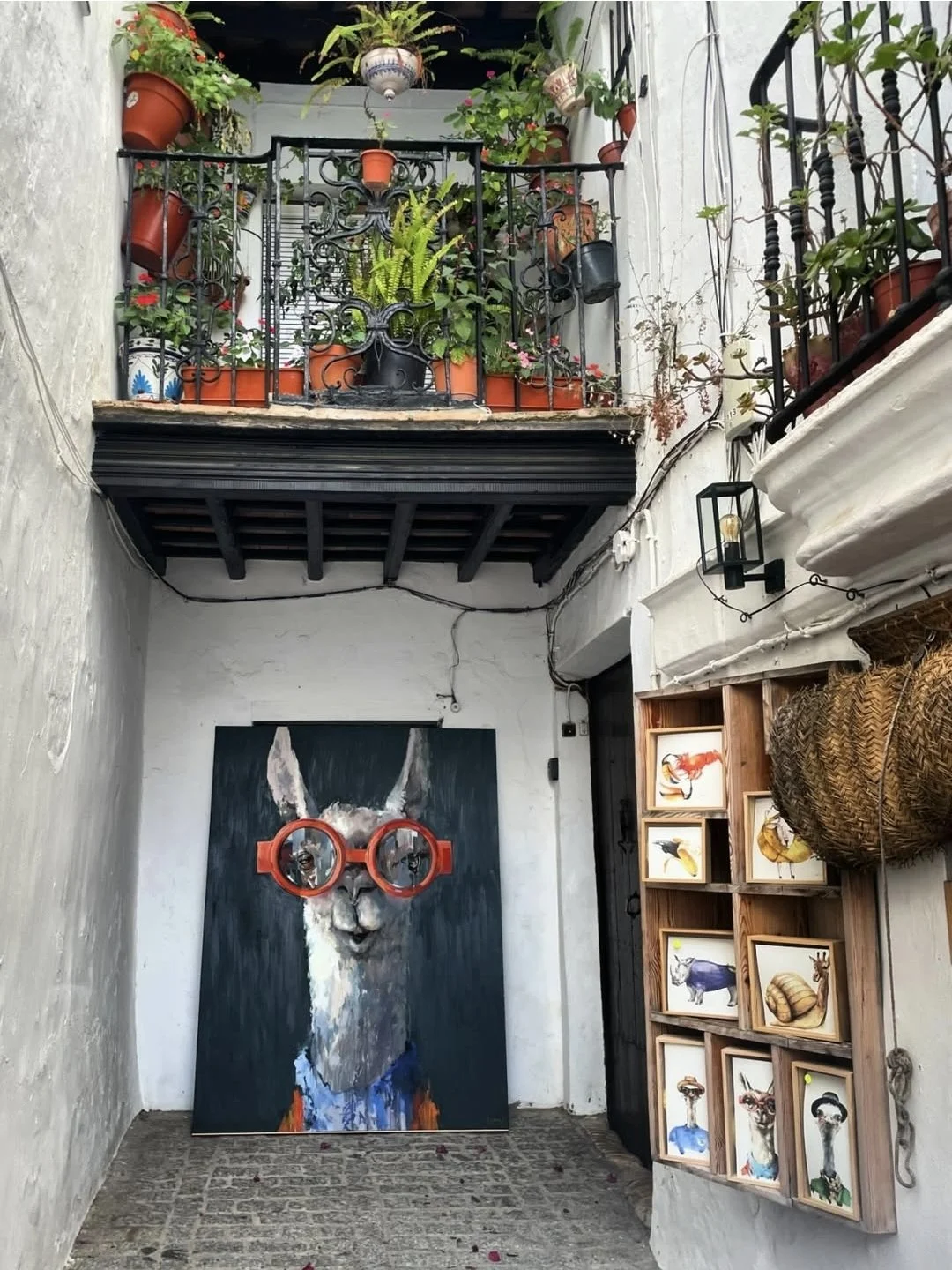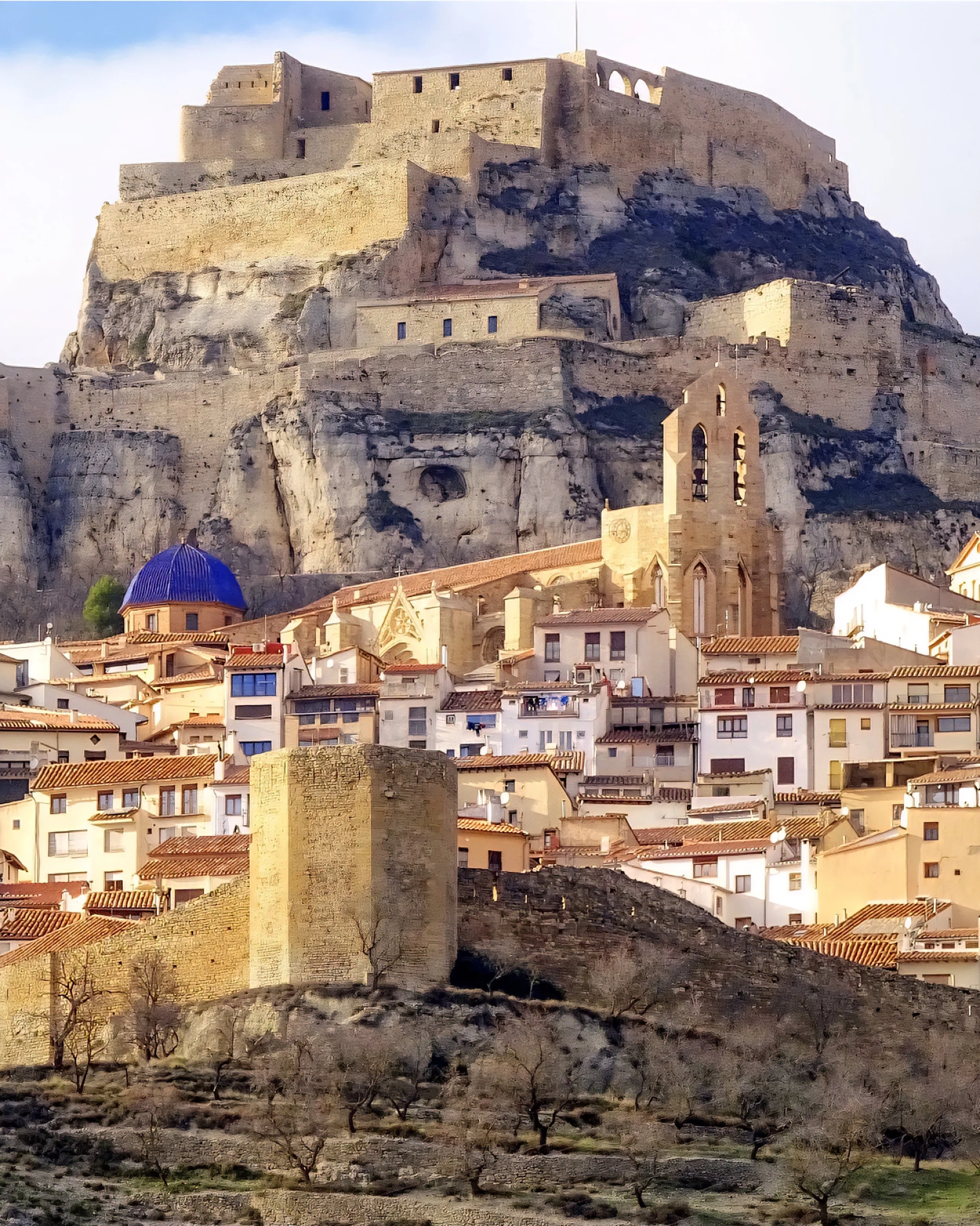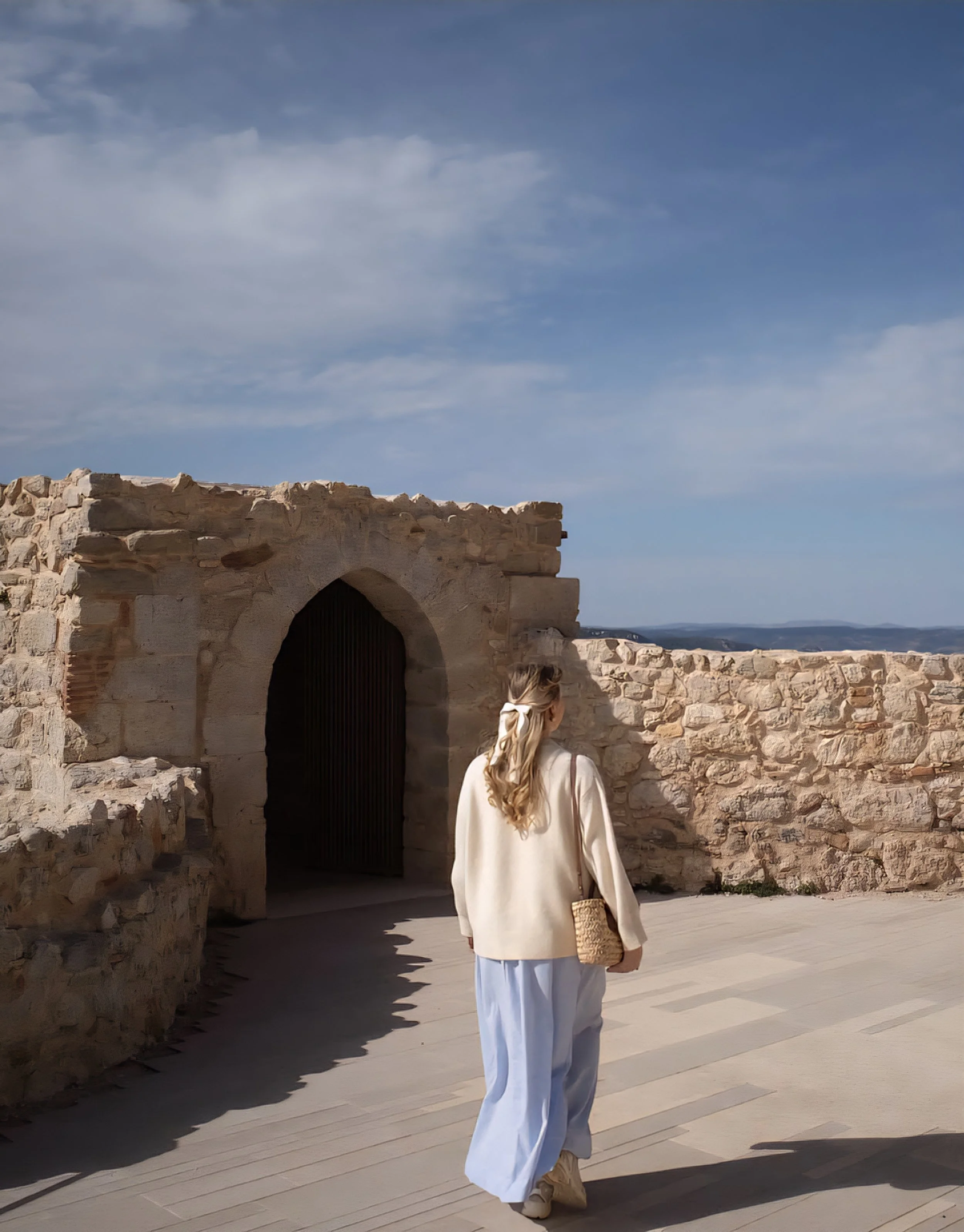Traveling Solo? These Spanish Towns Will Win You Over Instantly
Some places are just for slow mornings, second coffees, and that kind of quiet that makes you feel like yourself again.
If you’ve ever booked a solo trip just to breathe a bit deeper or reset your pace, Spain has towns that make that easy.
This isn’t a list of photogenic spots or “must-see” attractions. It’s about places that aren’t trying to impress anyone. The kind of towns where you can sit for an hour with one drink and no one bats an eye. Where cafés open when they’re ready, where people still say good morning, and where the only decision you need to make is which direction to wander.
Solo travel here doesn’t feel like a statement. It just makes sense. You’ll find quiet paths, sun-warmed benches, and small local restaurants where they remember your face by day two. These are places you settle into - not pass through.
And that’s the point.
Are you craving mountain light, or just a town that lets you slow down without needing a plan? These Spanish small towns have room for that.
Alcalá del Júcar: River Walks, Clifftop Views, and Calm Afternoons
Alcalá del Júcar isn’t somewhere you accidentally end up. Tucked into a deep river gorge in Castilla-La Mancha, this small town curves along the rock in a way that almost doesn’t seem real. Whitewashed houses are stacked into the hillside, and the Júcar River winds below like it’s been doing its own thing for centuries.
It’s the kind of place that feels still - even when there’s movement. Locals sweep their doorsteps in the morning. Fishermen stand quietly by the water. And you, as a solo traveler, don’t feel like the odd one out for just walking slowly, watching it all happen.
Start your day with a walk along the river trail. It’s flat, peaceful, and lined with trees that offer a bit of shade even in summer. You’ll pass arched stone bridges, the occasional bench, and maybe a local or two out for a stroll. Back in town, find a bar right by the river for a casual lunch where you can sit under the trees and people watch.
Later, walk up to the castle ruins at the top of town. It’s not a long hike, but it winds through narrow lanes that open suddenly into panoramic views over the valley. Sunset here is quiet, warm, and best enjoyed without a camera in hand.
There’s not a long list of must-sees in Alcalá del Júcar - and that’s the point. You come here for the calm, the rhythm, and the way it feels to end the day with your feet in the river and no real plans for tomorrow.
How to get there: The easiest way is by car from Albacete (about 1 hour). Public transport is limited, so driving lets you go at your own pace and stop for views whenever you feel like it.
Ronda: Still Mornings, Hidden Paths, and Tranquil Views
Yes, Ronda gets visitors. A lot of them. But don’t cross it off too fast - because if you stay a night or two and let the daytrippers clear out, the town changes. You start to hear it breathe a little. The pace softens. And it becomes exactly the kind of place that suits solo travel - if you know how to move through it.
Mornings are the best part. If you’re up early, walk toward the gorge before the town wakes up. Skip the viewing platform everyone goes to and find one of the smaller paths that winds down below the bridge. There’s one that starts near the old Arabic Baths and leads through olive trees and rock walls, slowly opening up to views that feel like they’re just for you. Even the air feels different down there: cooler, quieter, a little more honest.
The main sights are fine, but what makes Ronda work as a solo spot is the space in between. The streets just outside the historic core are calm and full of corners where you can pause without anyone noticing. A bakery with no name. A bench with a view over the valley. A small square where locals gather in the shade and don’t care that you’re not from here.
Restaurants often cater to couples or groups, but there are places where showing up alone feels completely natural. Sit at the bar near the open kitchen at Tragata and order one or two small plates with a glass of wine. You could also try the little taverns behind the town hall square - they’re quieter, more local, and no one expects you to say much.
Evenings are made for wandering here. After dinner, just walk. Don’t aim for the big sights, let the streets decide. You’ll pass cats sleeping on windowsills, open doorways filled with music, and the kind of views that make you stop without reaching for your phone. Ronda after dark is a different town entirely—warmer, slower, and full of little moments that don’t need to be documented.
If you’re staying overnight, choose somewhere just outside the busiest part of town. The old Arab quarter, near the southern gate, is usually calmer, with small guesthouses and garden patios that overlook the hills. You can wake up to birds instead of buses, and you’re still close enough to walk everywhere.
Getting there is easy by train from Seville or Málaga, but the real trick is staying long enough to let the place shift. Ronda doesn’t reveal itself in a quick visit. But if you give it the time and move quietly, it becomes something more than just a stop on the map.
Dreaming about… Bordeaux for your next solo trip?
This guide shares the quieter side of the city - peaceful wine tastings, charming corners, and local spots where solo travelers can slow down and soak it all in, without the rush.
Besalú: Stone Paths and Soft Light
Besalú is not the kind of place that begs to be photographed (although you probably will, especially at sunset). But its real charm shows up slowly, in the quiet of the mornings or the rhythm of your footsteps echoing on the old stone bridge. If you’re traveling solo and want to be somewhere that lets you disappear into your own thoughts for a while, Besalú does that without effort.
The town itself is small. A handful of winding lanes, a river, and buildings that look like they’ve always been there. And that’s the beauty of it. You can wander without a map. You can sit on a low wall with your takeaway coffee and watch the clouds move over the hills.
Start your morning early, before anyone else is out, and cross the bridge while the light’s still soft and gold. There’s usually a slight mist over the river, and the reflections in the water are better than anything you’ll see on a screen. You’ll pass locals walking their dogs, or old men opening shutters for the day. It feels real. Unpolished. Comforting.
There’s no pressure to “do” anything here. But if you’re curious, step into the old Miqvé, the medieval Jewish bathhouse tucked into the hillside. It’s often empty, and being there alone, listening to the quiet drip of water against stone, is strangely grounding. The Romanesque churches are beautiful, but it’s the spaces between them (the alleyways, the gardens, the benches under trees) that tend to stick with you longer.
Lunch doesn’t need to be a whole thing. Grab something simple from a bakery or pick up cheese and fruit from a corner shop and eat by the river. If you want to sit down somewhere with a view of the bridge, Pont Vell has a quiet terrace where solo diners blend in easily. And you’ll probably end up staying longer than planned.
Evenings are calm. There’s not much nightlife, and that’s exactly why it works. Take a walk just before dark: follow the path beside the river, away from the bridge. You’ll hear frogs, maybe catch the sound of church bells, and you’ll notice how the town glows once the lanterns flicker on.
Besalú feels safe without being sterile. Old without being stiff. It’s the kind of place where being alone doesn’t feel like an oddity - it just feels right.
The easiest way to get here is to fly into Girona and rent a car. The drive is short, and the surrounding countryside is worth exploring if you have time. You’ll pass fields, crumbling stone houses, and maybe even a shepherd or two. But even if you only come for a day or two, Besalú has a way of slowing you down in the best possible way.
Comillas: Sea Breezes, Local Flavor, and a Slower Side of Northern Spain
Comillas is one of those places that doesn’t get mentioned often, and that’s a good thing. It’s in Cantabria, tucked along Spain’s northern coast: not flashy, not overly polished, but full of quiet charm if you give it a chance. The town has a lived-in feel, with a mix of traditional fishing life, a bit of architecture that might surprise you, and beaches that still feel like part of the community, not just a summer photo op.
Walk through the town and you’ll see it’s not trying to be trendy. The streets are lined with weathered stone buildings, small cafés that serve exactly what the locals order, and shops that open when they feel like it. Solo travelers fit right in here - no one’s watching, and you won’t feel out of place sitting alone with a coffee or walking along the coastal path by yourself.
One of the unexpected highlights is El Capricho, a colorful early Gaudí building with tiled flowers and curved walls. It’s a small visit, but worth seeing if you’re in the mood for something different. But don’t come expecting big crowds or heavy explanations, just wander through and take it in at your own pace.
The beach, Playa de Comillas, is wide, clean, and has that fresh Atlantic breeze that clears your head. Even in summer, if you go early or late in the day, it stays peaceful. Bring a book or just walk the length of the sand. It’s the kind of beach that doesn’t need music or beach clubs - it’s good as it is.
Comillas is also a nice base if you want to explore more of Cantabria without the logistics of a bigger city. You’re close to Santillana del Mar, San Vicente de la Barquera, and the green inland hills that make this part of Spain so different from the south.
For meals, skip the tourist menus. Ask locals where they eat. Places like Gurea offer simple seafood dishes that feel right after a day outside. If you’re vegetarian, you’ll find it a bit more limited, but the produce is fresh and the pace of meals is slow: perfect if you’re eating alone and don’t want to rush.
How to get there: The easiest way is to fly into Santander, rent a car, and drive along the coast - about 45 minutes of countryside and sea views. There are also buses, but if you want flexibility and a few detours, a car gives you more breathing room.
Planning your next solo trip?
If you're looking for peaceful cities in Europe that are kind to your budget and your energy, this guide rounds up affordable places where solo travel still feels easy, inspiring, and slow-paced — no crowds, no pressure.
Albarracín: Pink Stone Streets and Morning Hikes
Albarracín is tucked into the hills of Aragón, and while it’s been featured in a few travel articles, it still feels like it’s doing its own thing. The town is built into a curve of the mountains, with narrow streets that seem to fold in on themselves and terracotta buildings that haven’t been freshened up just for visitors. It’s quiet, a little scruffy in places, and better for it.
For solo travelers, it’s the kind of place where no one’s paying attention to what you’re doing. You can walk slowly, sit on a low wall, or stand around taking in a view without feeling like you’re in the way. People live here year-round. They go about their days. You’re just part of the background for a while - and that’s the appeal.
There’s not much to “tick off,” which makes it a good reset spot. You might start the day with a walk down by the river path, which loops around the town with forested sections and a few wooden bridges. It’s easy to follow, not too steep, and you’ll likely pass only a few others, even during busier months. From there, you can make your way slowly back up into town and stop at a small café near Plaza Mayor. Some have basic menus, others serve local game dishes like venison or wild boar - but most spots keep it simple.
If you feel like stretching your legs later, climb toward the old fortress wall. The view is worth it, especially late in the day when the light’s softer and the crowds have thinned. But there’s no rush. You can easily spend most of the afternoon just weaving through the streets, finding a bench or shady step to sit on.
The evenings are especially good for solo travelers. It gets quiet early, and there’s no pressure to do anything. A slow dinner at Rincón del Chorro or Tiempo de Ensueño gives you a good mix of regional food and a relaxed atmosphere - no need to dress up or explain why you're dining alone. They’re used to people taking their time.
How to get there: The easiest way is to fly into Zaragoza or Valencia, then rent a car. From either city, it’s about 2.5 hours on quiet roads. Public transport is limited, and that’s part of why it still feels unbothered. If you want somewhere that doesn’t rely on tourism to function, Albarracín is one of those places.
Vejer de la Frontera: Hilltop Views, Whitewashed Calm, and a Sense of Space
Vejer sits quietly above the Costa de la Luz, a whitewashed hill town with narrow streets, distant sea views, and a rhythm that doesn’t bend for tourism. It’s well known among Spaniards, but still flies under the radar for many international travelers - especially those moving solo and looking for somewhere calm but still connected.
The streets here twist and climb, and it’s easy to lose track of time wandering them. Small galleries, local design shops, and family-run bakeries are tucked behind arches or along quiet staircases. You’ll find small ceramic studios and Andalusian patios that feel lived-in, not curated. For solo travelers, it’s the kind of place where you’re never looked at twice for showing up to dinner alone or reading a book with your breakfast.
Start your morning with coffee at Café Bar Central (not fancy, just reliable) and walk through the old quarter while it’s still quiet. The town slowly wakes up. Later, head toward El Palmar beach, just a 15-minute drive or taxi away. It’s wide, raw, and great for swimming or sitting with your feet in the sand. Unlike the busy beaches near Málaga or Marbella, this stretch feels spacious, even in peak season.
Back in town, lunch at Las Delicias or Corredera 55 is a good move - both have welcoming staff and fresh food, whether you're in the mood for tapas or something heartier. You can linger as long as you like. There’s no pressure to move on.
In the late afternoon, grab a spot on La Tetería del Califa’s rooftop terrace. It’s popular, but not in a tourist trap way, and you can just sit with a mint tea or wine and take in the hills rolling down to the coast. The town gets breezy in the evenings, which makes summer nights more comfortable than in lower-altitude towns.
You don’t need to plan much in Vejer. That’s the draw. It’s safe, welcoming, and easy to navigate on foot. And while there’s just enough going on (live music some nights, small markets, food pop-ups= it never feels like a scene.
How to get there: Fly into Jerez or Seville. From Jerez, it’s just over an hour by car. Buses run from Cádiz and Barbate, but a rental car gives you freedom to explore the beaches and nearby countryside. It’s not hard to get here—but it still feels like a tucked-away corner of southern Spain.
Looking for more slow, soul-soothing places to travel on your own?
These 7 underrated European destinations are perfect for solo travelers craving calm, connection, and a break from the usual crowds. Think morning coffee by the sea, quiet market strolls, and towns that feel like a reset.
Morella: Stone Walls, Silence, and Big Sky Views
Morella doesn’t try to charm you with trends or curated experiences - it just is what it is. A walled hilltop town in the province of Castellón, surrounded by mountains, dry air, and a whole lot of sky. It’s quiet, it’s real, and it makes sense if you’re traveling solo and want somewhere with a slower, steadier pace.
The first thing you notice is the castle. It sits above everything, watching over the town, and you’ll probably hear the wind up there before anything else. Walking up to the top is worth it - not just for the views, but for the feeling of having space around you again. That’s something you notice a lot in Morella: air, space, time.
The town itself is small enough to feel manageable, but not so small that you’ll get bored. You can spend your mornings slowly exploring the old stone streets, popping into Art de Morella for handwoven textiles, or sitting outside with a coffee and a pastry at Vinatea Café.
If you like a good walk, there are paths that lead out into the hills around the town - nothing too extreme, just enough to stretch your legs and take in the scenery. Or you can visit the Santuario de la Virgen de la Vallivana, a peaceful detour about 20 minutes away by car.
For food, look out for places serving local truffle dishes (they take their mushrooms seriously here). Daluan is a small, refined spot that’s used to solo diners and serves seasonal menus without the fuss. The staff are kind, the pace is relaxed, and the wine list leans local.
Morella is the kind of place where your days don’t need structure. It’s safe, peaceful, and unbothered by trends. Solo travel here just works: you’re not a curiosity, you’re just another traveler taking their time.
How to get there: Fly into Valencia or Castellón, then rent a car—it’s about 2.5 hours from Valencia. Public transport options exist but are infrequent, and part of what makes Morella special is the journey: winding roads through dry landscapes, the castle appearing suddenly as you climb the final stretch.
You don’t need a packed plan to enjoy Spain on your own. Some of the best solo trips come from slow mornings, long walks, and places that don’t ask much of you. No need to rush. Just a town that lets you settle in and take your time.
That’s what these places offer. You can show up, do as much or as little as you want, and still feel like you’ve had a good day. You’ll find spots for coffee where no one minds if you stay a while. You’ll find space to think, walk, and just be - without feeling out of place.
Solo travel doesn’t always need to be a big adventure. Sometimes it’s just about feeling comfortable on your own, somewhere new.
Save this guide for the next time you need a quiet break. Or send it to someone who travels the way you do - slow, curious, and happy to go off the radar for a while.
FAQ: Spanish Small Towns for Solo Travelers
What are the safest towns in Spain for solo female travelers?
Towns like Vejer de la Frontera, Besalú, and Alcalá del Júcar are popular with solo female travelers because they’re walkable, friendly, and known for a relaxed local vibe. You’ll find welcoming cafés, easygoing locals, and places that don’t feel overwhelming.
Is Spain good for solo travel if I don’t speak Spanish?
Yes, especially in smaller towns where people are patient and used to travelers. A few key phrases go a long way, and many restaurants, hotels, and shops are used to helping visitors. Places like Ronda, Comillas, and Morella feel approachable even without fluent Spanish.
Where can I go in Spain to avoid crowds?
Avoid the big cities and head to quieter inland or coastal towns. Try Albarracín for a peaceful mountain escape, or Ericeira (Portugal) if you’re nearby and want clifftop calm. Even better—travel in shoulder season (spring or autumn) for fewer tourists.
What’s the best area in Spain for slow travel?
Andalucía, Castilla-La Mancha, and the interior of Catalonia are ideal for slow, intentional travel. These areas are full of small towns where life moves at its own pace and there’s no pressure to rush from place to place.
Can I explore Spanish villages without a car?
Some towns like Ronda and Besalú are accessible by train or regional bus. Others (like Alcalá del Júcar or Morella) are best with a rental car if you want full flexibility. If you’re sticking to public transport, plan around regional hubs like Girona or Málaga.
What should I pack for solo travel in rural Spain?
Comfortable shoes, a reusable water bottle, offline maps (for towns with spotty reception), a good book or journal for café time, and layers - the weather can change quickly, especially in mountain regions.
Are there solo-friendly accommodations in Spanish small towns?
Yes - look for small boutique hotels or locally run guesthouses. Many of them are used to hosting solo travelers and offer a quieter, more personal experience than big hotels. Places with terraces, views, or kitchens make longer solo stays even more comfortable.
Is Spain safe for walking alone at night in small towns?
In most smaller towns, walking alone at night is common and feels safe, especially in areas with locals out and about. Still, always trust your instincts and ask your host or hotel which areas to avoid if you’re unsure.
Where can I stay in Spain that’s peaceful but still has things to do?
Towns like Ronda, Vejer de la Frontera, and Comillas strike a good balance - beautiful views, good food, walkable centers, and nearby trails or cultural spots. You’ll never be bored, but you also won’t feel overwhelmed.

